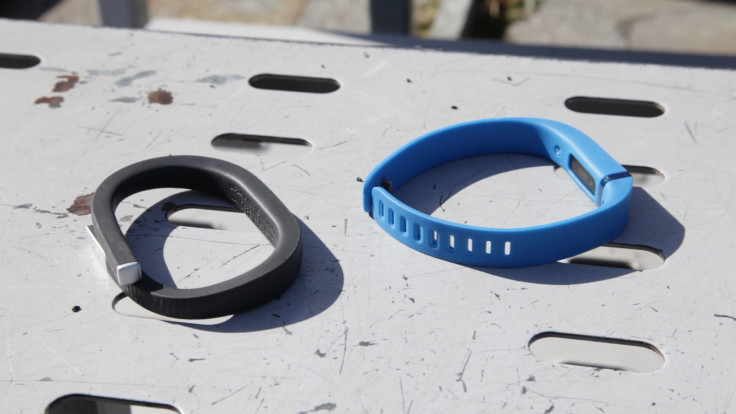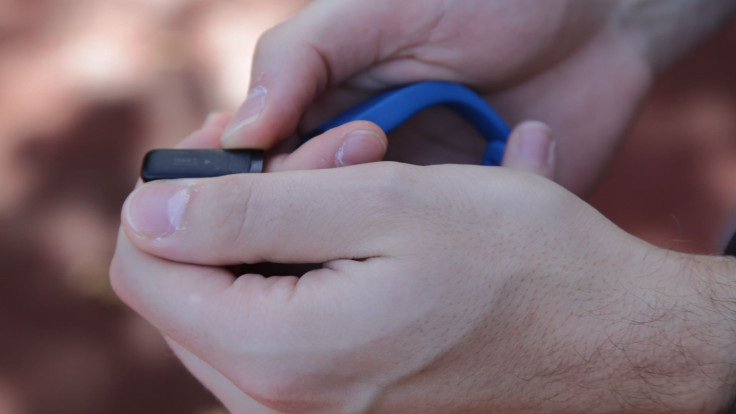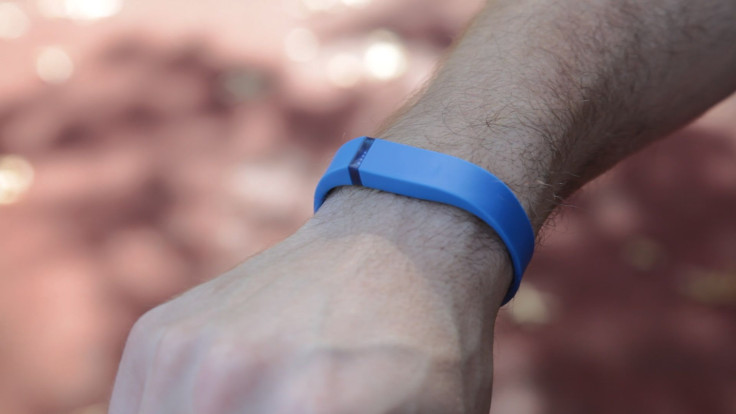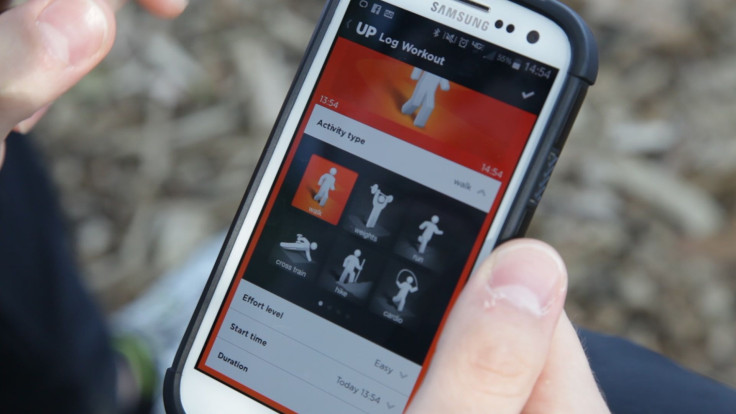FitBit Flex Versus Jawbone UP24: Battle Of The Most Popular Fitness Trackers [VIDEO]

There’s any number of fitness trackers on the market these days, but two have risen to the top of the sales charts: the FitBit Flex and the Jawbone UP24. Both are relatively simple, both are relatively stylish, and both are around $100.
So the question is: which one is better?
Design

The first thing you need to know about the FitBit Flex is that this band you see is really just a holster. Once you open it up, you find that the important electronic bit is roughly the size of a thumbnail. Because of this, the Flex is paired with a comfortable, durable rubber strap, like the kind you get on a $20 wristwatch. Sure, it’s cheap, but at least the strap is adjustable.
And the Flex is waterproof, to a degree -- you can shower with it, but snorkeling is a no-no. That’s because the Flex itself is a separate, thumbnail-sized device that slips into the rubber band. Once inserted, the Flex displays your progress throughout the day -- whether your goal is steps, distance, calories burned or active minutes -- by tapping on the top. Your progress is represented on the band as one to five flashing LEDs to give you an idea of how you’re doing, without going into the phone app.

The Jawbone UP24, on the other hand, is a one-piece device. It twists onto your wrist in the same way a bangle does, but it’s not as idiotproof as the Flex; Jawbone themselves warn you to be a bit careful with the process, since twisting the band too much will break it.
It’s ridged and grooved on the outside, hiding all the important electronic stuff somewhere in the middle. It’s hardly a pretty design, but it does have a cool little button on the end of the band that allows it to enter sleep or workout modes, logging all of your data without ever forcing you to use your phone.
The Flex was more comfortable, but that’s heavily subjective; the UP24, even in the largest size, never properly fit my large wrist. The bigger problem was the UP24’s constant Bluetooth hiccups: while the Flex synced reliably, the UP24 app constantly gave me errors, forcing me to reboot the app, my Bluetooth or the phone itself.
It’s worth mentioning that, once I unpaired the Flex from my phone, the UP24’s connection was much more consistent.
Winner: FitBit Flex
App

Neither of these devices has a screen, so they’re heavily reliant on their apps. The apps help round up and visualize all of the data collected by the trackers (distance traveled, hours slept, food eaten, etc.). The UP24 gets a slight edge when it comes to diet plans: It’s much simpler to track your food intake throughout the day with the UP24 because you can just take a picture of it. The UP24 app searches for nutrition facts when you take a picture of the food’s stats or scan a bar code. The FitBit app requires you to enter everything manually, which you can also do on the UP24, but doing so on both apps is kind of a chore.
Both devices can help track your sleep and set alarms; you can enter sleep mode on both devices before you lie down, and they’ll track your movements before you wake. In this way, they’re trying to assess the quality of the sleep you’re getting. Of course, exactly how accurate these little things can be is debatable, but they are able to notice your tossing and turning at least. The UP24 does set itself slightly apart here; if it notices you’re not getting the recommended sleep amount, the app will pop a small suggestion at the top, with a stretch goal of an earlier bedtime. In fact, the UP24 app does that with all of the data types it collects; it’ll push you to move more if you’ve had a sedentary day, or caution you to throw the brakes on the junk food train.

Both apps allow you to dig deeper into all of the logged data, but UP24 lets you go further, more easily; data trends are much easier to understand here than they are in the Flex. If you want to make much sense of the Flex’s data, you’ll have to employ companion apps, which complicates the experience.
The Flex’s main screen is better looking and more compact, though. Each day gets its own screen, with all the stats separated; the UP24 gets separate days as well, along with a continuous scroll underneath, similar to Facebook or Instagram, and it just isn’t as pleasing to look at.
Winner: Jawbone UP24
Performance

It’s worth mentioning that both of these trackers will last for over a week, though the UP24 does get a day or two more from a charge.
When it comes to workouts, the UP24 and the Flex have different philosophies. The Flex passively logs your “very active minutes” but can’t really differentiate a morning walk from a solid run. The UP24 doesn’t track this data on its own at all, but once you put it into “stopwatch mode,” it recognizes and records that performance. Or you can add a kind of workout after the fact, complete with style and training intensity. The Flex can’t do that without the help of other apps.
But the real test is in in the pedometer performance -- none of this really matters if the readings aren’t accurate. Even after calibrating the stride lengths for both devices, neither was completely accurate. The Flex usually underestimated, whereas the UP24 overestimated. The UP24 was usually closer to the actual distance traveled, though.
Winner: Jawbone UP24
Conclusion

The UP24 is a good tracker, when it cooperates. But it’s just not as comfortable for me to use as the Flex is. Technically, the UP24 is better organized and more capable than the Flex, but it’s just not something I wanted to have on my wrist all the time. It’s a close call, but I wound up enjoying the UP24’s capabilities enough to give it the overall nod.
Neither is a bad choice, but the winner here is the Jawbone UP24.
© Copyright IBTimes 2024. All rights reserved.












